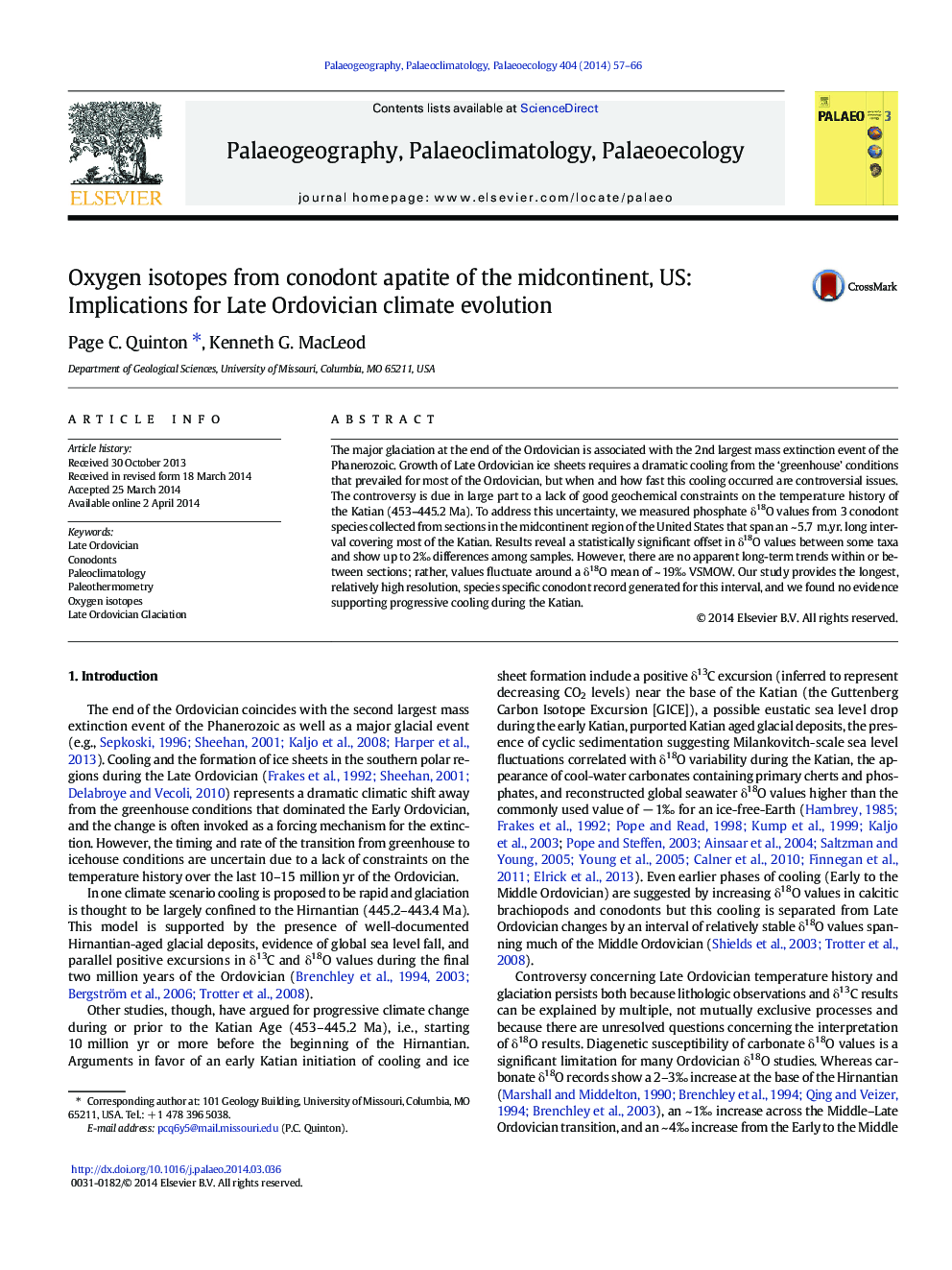| Article ID | Journal | Published Year | Pages | File Type |
|---|---|---|---|---|
| 6350138 | Palaeogeography, Palaeoclimatology, Palaeoecology | 2014 | 10 Pages |
Abstract
The major glaciation at the end of the Ordovician is associated with the 2nd largest mass extinction event of the Phanerozoic. Growth of Late Ordovician ice sheets requires a dramatic cooling from the 'greenhouse' conditions that prevailed for most of the Ordovician, but when and how fast this cooling occurred are controversial issues. The controversy is due in large part to a lack of good geochemical constraints on the temperature history of the Katian (453-445.2 Ma). To address this uncertainty, we measured phosphate δ18O values from 3 conodont species collected from sections in the midcontinent region of the United States that span an ~ 5.7 m.yr. long interval covering most of the Katian. Results reveal a statistically significant offset in δ18O values between some taxa and show up to 2Ⱐdifferences among samples. However, there are no apparent long-term trends within or between sections; rather, values fluctuate around a δ18O mean of ~ 19ⰠVSMOW. Our study provides the longest, relatively high resolution, species specific conodont record generated for this interval, and we found no evidence supporting progressive cooling during the Katian.
Related Topics
Physical Sciences and Engineering
Earth and Planetary Sciences
Earth-Surface Processes
Authors
Page C. Quinton, Kenneth G. MacLeod,
